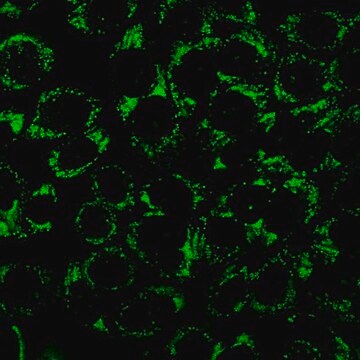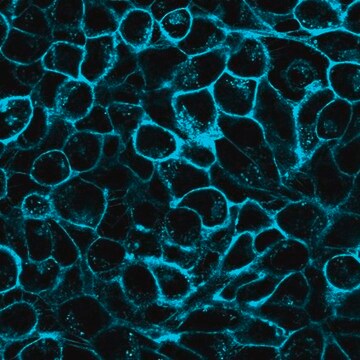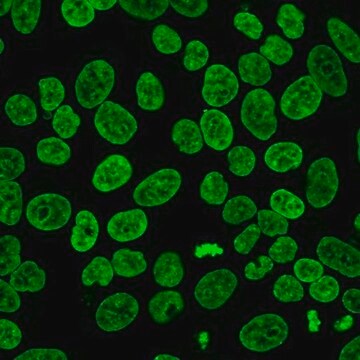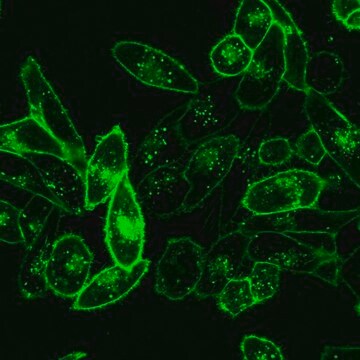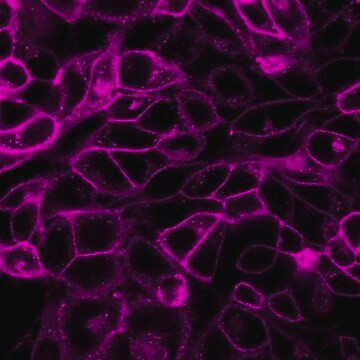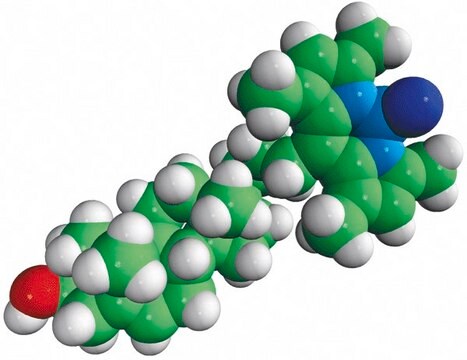SCT241
BioTracker™ LD-1 Near-IR Lipid Droplet Live Cell Probe
Sinônimo(s):
BioTracker™ LD-1 Near-IR Lipid Droplet Live Cell Probe, Lipid Droplet Live Cell Dye, Lipid Droplet Live Cell Probe, Lipid Droplet Probe, NIR Lipid Droplet Dye
About This Item
Produtos recomendados
embalagem
vial of 1 mg
Nível de qualidade
fabricante/nome comercial
Millipore
técnica(s)
cell culture | mammalian: suitable
flow cytometry: suitable
método de detecção
fluorometric
Condições de expedição
dry ice
temperatura de armazenamento
−20°C
Descrição geral
This LD-1 probe is chemically optimized for the low-polarity, high-viscosity microenvironment found in lipid droplets.
In contrast with Raman microscopy and transmission electron microscopy (TEM) fluorescent small molecule probes have been developed as promising tools for detecting LDs . Advantages of fluorescent LD probes include the capability for real-time and in vitro testing, plus excellent selectivity and sensitivity.
Spectral properties
Absorbance : 650 nm
Emission (max): 745 nm
Reference
Wu X, Wang X, Li Y, Kong F, Xu K, Li L, Tang B. 2022. A near-infrared probe for specific imaging of lipid droplets in living cells. Anal Chem. 94(11):4881–4888.
Aplicação
Características e benefícios
Descrição-alvo
forma física
Armazenamento e estabilidade
Informações legais
Exoneração de responsabilidade
Código de classe de armazenamento
11 - Combustible Solids
Classe de risco de água (WGK)
WGK 3
Ponto de fulgor (°F)
Not applicable
Ponto de fulgor (°C)
Not applicable
Certificados de análise (COA)
Busque Certificados de análise (COA) digitando o Número do Lote do produto. Os números de lote e remessa podem ser encontrados no rótulo de um produto após a palavra “Lot” ou “Batch”.
Já possui este produto?
Encontre a documentação dos produtos que você adquiriu recentemente na biblioteca de documentos.
Nossa equipe de cientistas tem experiência em todas as áreas de pesquisa, incluindo Life Sciences, ciência de materiais, síntese química, cromatografia, química analítica e muitas outras.
Entre em contato com a assistência técnica